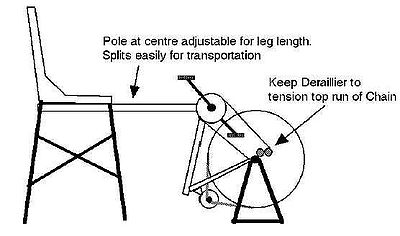Difference between revisions of "Pedal-Powered Electricity Generator"
| (3 intermediate revisions by 2 users not shown) | |||
| Line 1: | Line 1: | ||
| + | |||
{{stub}} | {{stub}} | ||
[[Category:English Review]] | [[Category:English Review]] | ||
| Line 46: | Line 47: | ||
==Categories== | ==Categories== | ||
| + | --[[User:HTP Meret|HTP Meret]] 21:54, 27 February 2010 (UTC) | ||
| + | |||
| + | [[fr:Générateur d'électricité à pédales]] | ||
Latest revision as of 18:48, 25 April 2017
Contents
Short Description
- Problem: Lack of wind, water or fuel to power a generator.
- Idea: Combine a chair and the back end of a bike to power a generator
- Difficulty: Difficult
- Price Range: Depends on the material's availability
- Material Needed: Chair, the back end of a bike, generator, belt, poles, welding device
- How Many people? 1-2
Concept
How to Build the Pedal-Powered Electricity Generator
Step 1: Connect the bicycle rear with the chair.
Use an adjustable pole if you want to adjust the pedal powered generator to different leg length.
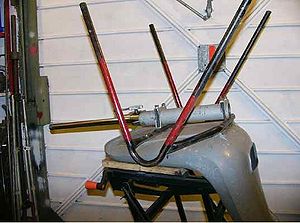
Use a socket to provide more portability.
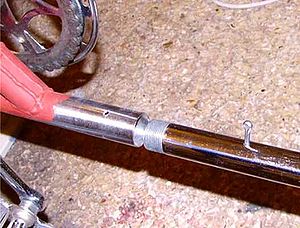
Do not weld directly onto the crank housing.
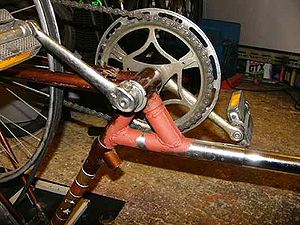
The final crank position should be a couple of inches above the seat.
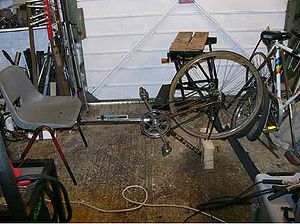
Step 2: The base for the generator.
The generator will be placed on the bottom in the front of the wheel and its base can be made of office chair parts.
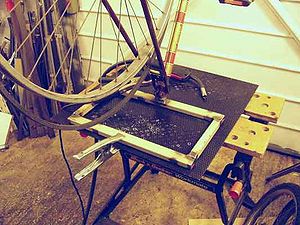
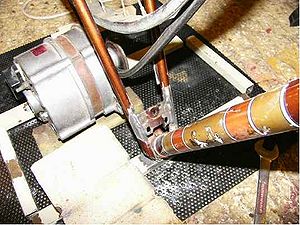
Step 3: Generator belt
The wheel shown in the picture above is a 26 inch one. To fit the generator between the wheel and the ground a A78 (78 inch circumference) belt was used. Now everything is ready to convert mechanical energy to electrical energy.
References and Further Reading
Related Articles
- Principles of Muscle Power
- Treadmills
- Pedal-Powered Devices (Overview)
- Pedal-Powered Blender
- Hand-Crank Devices (Overview)
- Hand-Crank Electricity Generator
- Hand-Crank Blender
- Hand-Crank Food/Grain/Coffee Mill
Categories
--HTP Meret 21:54, 27 February 2010 (UTC)
